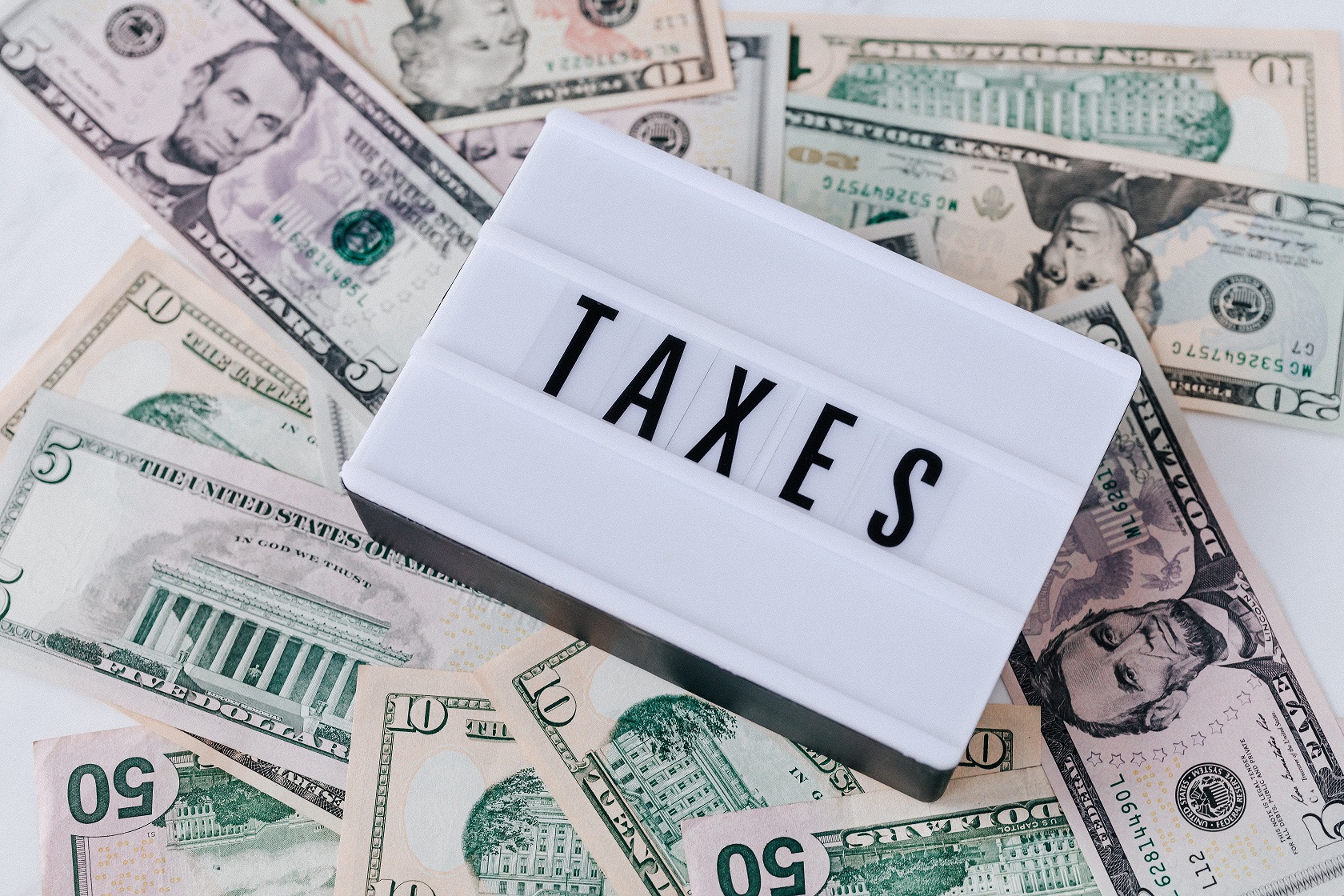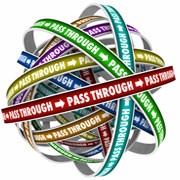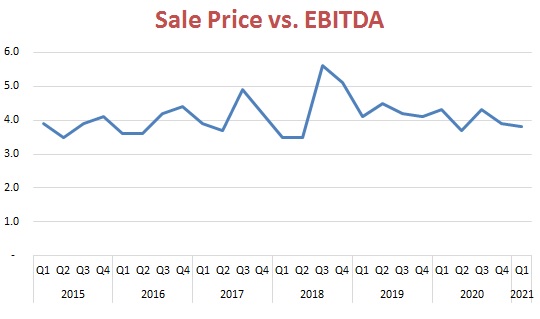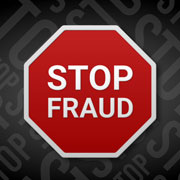

So-called “pass-through” entities — including partnerships, limited liability companies (LLCs) and S corporations — generally aren’t required to pay entity-level taxes. So, when it comes to valuing a small business structured as a pass-through entity for tax purposes, people often wonder: Would investors pay a premium for an interest in this business compared to an interest in an otherwise identical C corporation? And, if so, how much is this favorable tax treatment worth? This is the crux of the tax-affecting debate.
Much of the litigation regarding this issue comes from the IRS and tax courts. But a recent Tennessee Court of Appeals decision discusses this issue in the context of a shareholder buyout. (Raley v. Brinkman, No. 2018-02002, Tenn. App., July 30, 2020)
Pros and Cons of Pass-Throughs
 For pass-through entities, all items of income, loss, deduction and credit pass through to the owners’ individual tax returns, and taxes are paid at the personal level. Distributions to owners generally aren’t taxable to the extent that owners have positive tax basis in the entity.
For pass-through entities, all items of income, loss, deduction and credit pass through to the owners’ individual tax returns, and taxes are paid at the personal level. Distributions to owners generally aren’t taxable to the extent that owners have positive tax basis in the entity.
If a pass-through entity distributes just enough of its earnings to cover the owners’ tax liabilities, there may be little potential valuation difference at the investor level between the pass-through entity and a taxable entity, assuming similar tax rates at the entity and the investor levels. If the pass-through entity distributes larger amounts of earnings to the owner, the interest becomes potentially more valuable than an equal interest in a taxable entity, all other things being equal. If the pass-through entity distributes less than the tax liability amount, an interest in the taxable entity could potentially be more valuable in the hands of the owner.
Court Allows Tax Affecting
The tax-affecting issue took center stage in a recent buyout case involving two equal partners in a restaurant that generated roughly $3.4 million in gross annual income in 2016. When the owners disagreed about how to manage their business, a Tennessee trial court ordered a buyout of one owner’s interest at “fair value” under applicable state law.
The business operated as an LLC that elected to be treated as an S corporation for income tax purposes. The trial court allowed the buyout price to include a hypothetical 38% corporate income tax rate to the restaurant’s earnings. But the seller (plaintiff) appealed, arguing that tax affecting wasn’t appropriate for a pass-through business that wasn’t subject to entity-level tax.
The buyer (defendant) contended that tax affecting was appropriate because the income from an S corporation passes through to the owners’ individual tax returns and is taxed at the owners’ personal tax rates. He also argued that valuation experts commonly use after-tax income values to calculate the capitalization rate under the income approach.
The appellate court explained that the problem with using the income approach to value a pass-through entity is that it’s designed to discount cash flows of C corporations, which are taxed at both the entity and the shareholder level. Income from an S corporation is taxed only at the shareholders’ personal level.
Citing the landmark Delaware Open MRI Radiology Associates case, the appellate court concluded that declining to tax affect an S corporation’s earnings would overvalue it, but charging the full corporate rate would undervalue it by failing to recognize the tax advantages of S status. The court also determined that it was appropriate to use an after-tax earnings stream because the expert’s capitalization rate was based on after-tax values.
Finally, the appellate court cited the Estate of Jones. In this U.S. Tax Court case, the court concluded that the cash flows and discount rate should be treated consistently when valuing a pass-through entity.
IRS Job Aid Provides Insight
The debate over tax affecting pass-through entities has persisted for decades. To help clarify matters, the IRS has published a job aid entitled “Valuation of Non-Controlling Interests in Business Entities Electing To Be Treated As S Corporations for Federal Tax Purposes.” This document helps IRS valuation analysts evaluate appraisals of minority interests in S corporations for federal tax purposes.
However, the job aid provides useful guidance on the issue of tax affecting that may be applied more generally to all types of pass-through entities that are appraised for any purposes, not just for tax reasons. Business valuation experts may use this job aid as a reference tool to help support their decisions to apply tax rates to the earnings of pass-through entities when projecting future cash flows.
No Bright-Line Rules
When it comes to tax affecting pass-through entities, there’s no clear-cut guidance that prescribes a specific tax rate — or denies tax affecting altogether. Rather, tax affecting may be permitted on a case-by-case basis, depending on the facts and circumstances.
© 2021, Powered by Thomson Reuters Checkpoint






 Buyers are most interested in an acquisition target’s core competencies, and they usually prefer a clean, simple transaction. Consider buying out minority investors who could object to a deal and removing nonessential items from your balance sheet. Items that could complicate a sale include underperforming segments,nonoperating assets, andshareholder loans.
Buyers are most interested in an acquisition target’s core competencies, and they usually prefer a clean, simple transaction. Consider buying out minority investors who could object to a deal and removing nonessential items from your balance sheet. Items that could complicate a sale include underperforming segments,nonoperating assets, andshareholder loans.


 Qualified charitable donations can help lower your taxable income as well as support worthwhile causes. However, not all donations are tax deductible. Individuals can deduct them only if they itemize.
Qualified charitable donations can help lower your taxable income as well as support worthwhile causes. However, not all donations are tax deductible. Individuals can deduct them only if they itemize.
 According to the 2020 Report to the Nations, asset misappropriation occurred in roughly 86 percent of the cases. Though misappropriation schemes are the most frequent fraud technique, they resulted in the lowest median loss ($100,000). Conversely, financial statement fraud took place less frequently (in 10 percent of cases), but it had the highest median loss ($954,000).
According to the 2020 Report to the Nations, asset misappropriation occurred in roughly 86 percent of the cases. Though misappropriation schemes are the most frequent fraud technique, they resulted in the lowest median loss ($100,000). Conversely, financial statement fraud took place less frequently (in 10 percent of cases), but it had the highest median loss ($954,000).

 Ambiguous or outdated buy-sells can cause problems when it’s time for a buyout. For example, an agreement containing undefined valuation terminology — such as “earnings” or “value” — may be subject to different interpretations.
Ambiguous or outdated buy-sells can cause problems when it’s time for a buyout. For example, an agreement containing undefined valuation terminology — such as “earnings” or “value” — may be subject to different interpretations.